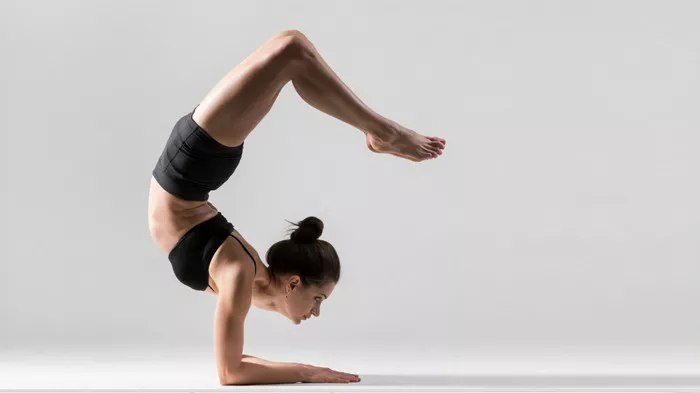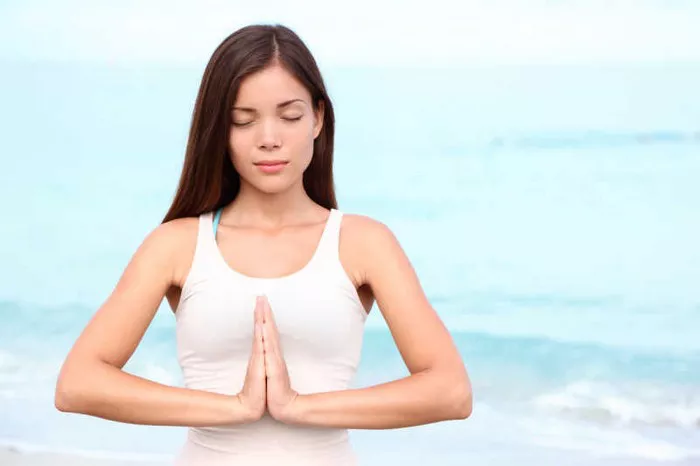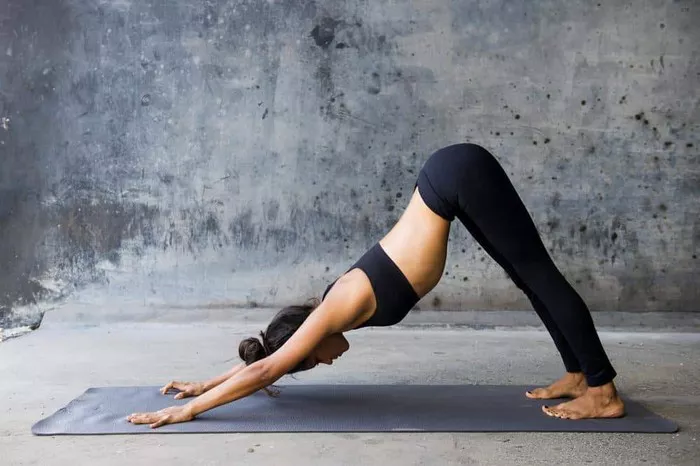Yoga, an ancient practice originating from the Indian subcontinent, encompasses a diverse array of poses aimed at harmonizing the body, mind, and spirit. Among the myriad poses within the yogic repertoire, the Scorpion Pose stands out as a pinnacle of both physical prowess and spiritual transcendence. In this comprehensive exploration, we delve into the origins and symbolism, physical and mental benefits, variations and modifications, step-by-step instructions, as well as precautions and contraindications associated with this majestic pose.
Origins and Symbolism
The Scorpion Pose, known as Vrischikasana in Sanskrit, finds its roots deeply embedded in the rich tapestry of yoga’s history. Its name is derived from the graceful yet potent movement of a scorpion, which embodies strength, flexibility, and balance. Symbolically, the pose represents the ability to overcome fear and transform negative energy into positive vitality. It is often associated with the Hindu deity Shiva, who is depicted as Nataraja, the Lord of the Dance, performing cosmic feats of creation and destruction with unparalleled grace and poise.
Physical and Mental Benefits
The Scorpion Pose offers a multitude of physical and mental benefits, making it a prized jewel in the crown of yoga asanas. From a physical standpoint, the pose strengthens the arms, shoulders, and core muscles, while simultaneously improving flexibility in the spine and hip flexors. It also stimulates the digestive and reproductive organs, promoting overall vitality and well-being.
On a mental and emotional level, the Scorpion Pose cultivates mindfulness, focus, and inner balance. As practitioners navigate the intricate alignment and subtle nuances of the pose, they develop a deep sense of presence and concentration, quieting the fluctuations of the mind and fostering a profound connection with the present moment.
Variations and Modifications
While the traditional Scorpion Pose may seem daunting to beginners, there are several variations and modifications that cater to practitioners of all levels and abilities. One common variation is the Forearm Scorpion Pose, where the practitioner rests on the forearms instead of the palms, reducing the strain on the wrists and shoulders. Another variation is the Wall-Assisted Scorpion Pose, where the practitioner uses a wall for support and stability, allowing for a gradual progression towards the full expression of the pose.
For those seeking a greater challenge, advanced variations such as the One-Legged Scorpion Pose or the Handstand Scorpion Pose provide an opportunity to refine strength, balance, and control at a heightened level of difficulty. Regardless of the variation chosen, each iteration of the Scorpion Pose offers its own unique benefits and insights, inviting practitioners to explore the boundless depths of their practice.
Step-by-Step Instructions
To practice the Scorpion Pose safely and effectively, follow these step-by-step instructions:
- Begin in a kneeling position on your mat, with your knees hip-width apart and your toes pointed.
- Lower your forearms to the mat, ensuring that your elbows are directly beneath your shoulders and your palms are facing down.
- Press firmly into your forearms and lift your hips towards the ceiling, coming into a forearm plank position.
- Walk your feet towards your elbows, allowing your hips to lift higher and your spine to elongate.
- Engage your core muscles and slowly begin to lift one leg off the mat, extending it towards the ceiling.
- Once you feel stable, bend your lifted leg at the knee and begin to kick gently towards the back of your head.
- Keep your gaze steady and your breath steady as you find your balance in the pose.
- To come out of the pose, gently lower your lifted leg back to the mat and return to the starting position.
- Remember to approach the Scorpion Pose with patience, humility, and respect for your body’s limitations. With consistent practice and mindful awareness, you will gradually unlock the full potential of this transformative pose.
Precautions and Contraindications
While the Scorpion Pose offers a multitude of benefits, it is essential to approach it with caution and mindfulness, especially if you have any pre-existing injuries or medical conditions. Avoid practicing the pose if you have any issues with your wrists, shoulders, or spine, as it may exacerbate these conditions. Additionally, pregnant individuals should refrain from practicing the Scorpion Pose, as it places undue pressure on the abdomen and may compromise the safety of both mother and baby.
It is also crucial to listen to your body and honor its signals during the practice. If you experience any sharp pain or discomfort, ease out of the pose immediately and consult with a qualified yoga instructor or healthcare professional. Remember that yoga is not a competition, and it is far more important to prioritize safety and self-care than to push yourself beyond your limits.
Conclusion
In conclusion, the Scorpion Pose stands as a testament to the transformative power of yoga, offering a gateway to physical vitality, mental clarity, and spiritual awakening. By embracing its challenges with an open heart and a steadfast mind, practitioners can unlock the hidden depths of their potential and soar to new heights of consciousness and bliss. As we journey deeper into the realms of self-discovery and self-mastery, may the Scorpion Pose serve as a guiding light, illuminating the path towards wholeness, harmony, and radiant vitality.
FAQs:
Is the scorpion stretch bad for your back?
The Scorpion Pose can potentially strain the back if performed incorrectly or by individuals with pre-existing back issues. It demands a high degree of flexibility and strength, particularly in the spine, shoulders, and core. Practitioners should approach it mindfully, ensuring proper alignment and listening to their body’s signals. With gradual progression and guidance from a qualified instructor, the Scorpion Pose can be practiced safely, aiding in spine flexibility and strength. However, those with back injuries or discomfort should exercise caution and consider alternative poses or modifications.
Is scorpion pose a heart opener?
Yes, the Scorpion Pose can be considered a heart opener as it involves an extension of the chest and shoulders while arching the back. This extension helps to open the front body, including the chest, shoulders, and throat, creating space and allowing for deeper breaths. Energetically, heart-opening poses like the Scorpion Pose can evoke feelings of vulnerability, compassion, and connection, facilitating emotional release and fostering a sense of openness in both body and mind. Practicing heart-opening poses regularly can promote a sense of expansion and receptivity, inviting love, joy, and acceptance into one’s life.






















